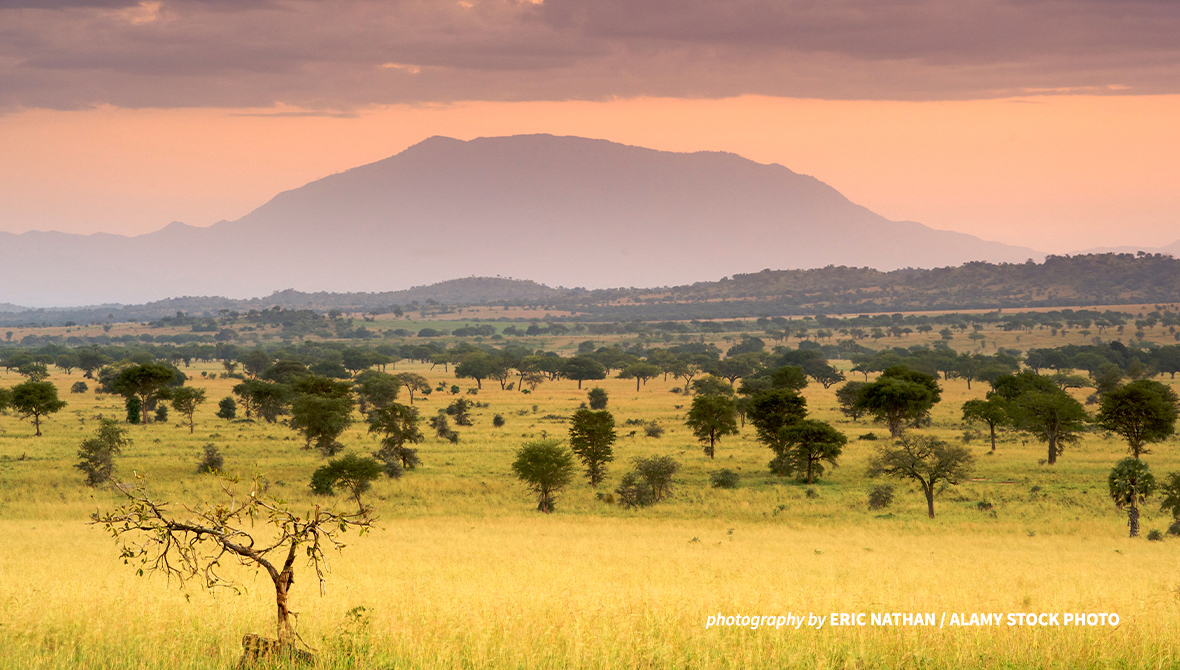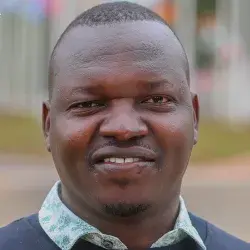Advancing Community-led Wildlife Economies in Uganda’s Karamoja

Kidepo Valley National Park is a critical area for conservation in Uganda.
In the untamed landscapes of Karamoja, a semi-arid region in northeastern Uganda, lies a complex interplay between people and wildlife. This remote and rugged terrain is home to a rich tapestry of wildlife, including elephants, lions, and giraffes, while also being inhabited by resilient communities whose lives and livelihoods are intricately linked to the land.
Uganda's Karamoja region comprises Abim, Amudat, Kaabong, Karenga, Kotido, Moroto, Nakapiripirit, Nabilatuk, and Napak districts. These communities are predominantly semi-nomadic and smallholder crop farmers who are facing the dual challenges of climate change and the delicate balance to coexist with wildlife. According to the Uganda Bureau of Statistics (UGBS), an estimated 1.2 million people live in the region. The region is characterized by semi-arid conditions and a livelihood system troubled by unending gun violence and resource conflicts.
About 40.8% of the 27,700-square-kilometer land of Karamoja falls under protected and conserved areas for wildlife and forest reserves. The wildlife parks and reserves include Kidepo Valley National Park, Karenga Community Wildlife Area, Matheniko Bokora, Pian Upe Wildlife Reserves, and others. Karamoja, like any other community, has also witnessed an increase in human population, which is in constant conflict with the wildlife.
Navigating the Challenge of Human-Wildlife Conflicts
Approximately 50% of wildlife resides outside protected areas, and human-wildlife conflict (HWC) cases stress the Kidepo Valley National Park and Pian Upe Wildlife Reserve.
Karamoja's communities heavily rely on subsistence agriculture and livestock rearing. However, the encroachment of wildlife into croplands and livestock predation causes economic losses, impacting food security and community well-being.
Encounters with large and potentially dangerous wildlife lead to safety concerns. These conflicts have dire consequences, sometimes resulting in injury or even loss of life.
AWF is Redefining the Narrative
AWF has adopted a community-centered approach to promoting coexistence and wildlife conservation in Karamoja, recognizing the critical need to address these challenges.
In April 2022, AWF convened a multi-stakeholder workshop and developed a comprehensive landscape strategy. AWF's rights-based conservation approach was at the center. Local communities engaged in mapping the landscape, identified threats to the landscape, ranked them, and formulated strategies and theories of change. Drawing on local firsthand knowledge, we identified HWC hotspots, migratory routes, and wildlife-economy opportunities. Through a community-centric model, target goals and strategies in conservation and human well-being were identified, and a way forward was forged. This approach underpins AWF’s initiatives in different landscapes and countries.
AWF collaborates with local communities and government authorities, engaging them in conservation efforts and building their capacity to mitigate human-wildlife conflicts. Cohorts of community wildlife scouts have been and continue to be trained in wildlife behavior and crime prevention and equipped with conflict mitigation techniques. Over the years, protective barriers and scare devices have been constructed. These scouts serve as first responders to HWC incidents, preventing crop destruction, animal predation, and retaliatory killings. These interventions have immensely increased food production, food security, and livelihoods in communities. AWF also supports community-led wildlife economies by promoting sustainable income-generating activities, such as eco-tourism and craft production. This has reduced reliance on traditional agriculture and created opportunities for economic growth.
AWF facilitates conservation agreements between local communities and government agencies, ensuring a fair distribution of benefits from wildlife resources. Recently, with the support of AWF's Global Leadership Department, the Karamoja Development Forum, and the African Leadership Institute, we conducted a consultative dialogue. The dialogue engaged pastoralist communities of Karamojong, Turkana of Kenya, Pokot of Kenya and Uganda, and government officials from Uganda and Kenya. The focus was on resource sharing in the transboundary Pian Upe and Matheniko-Bokora wildlife reserves and rangeland areas in the Karamoja sub-region of Uganda, which spans Uganda and Kenya.
These consultations and negotiations resulted in a resource synthesis paper and a Draft Resource Sharing Agreement.
As AWF continues to work in Karamoja, the future looks promising. The region is gradually transforming into a model for community-led wildlife economies where humans and wildlife coexist harmoniously.
Karamoja's story is a testament to the resilience of both its communities and wildlife. The challenge of human-wildlife conflicts remains significant, but AWF's proactive and holistic approach is making a meaningful difference. Through education, empowerment, and sustainable economic opportunities, Karamoja is on a path toward harmonious coexistence with its natural neighbors. This proves that human-wildlife conflicts can be mitigated, and communities can lead the way in building a brighter future for both people and wildlife.
